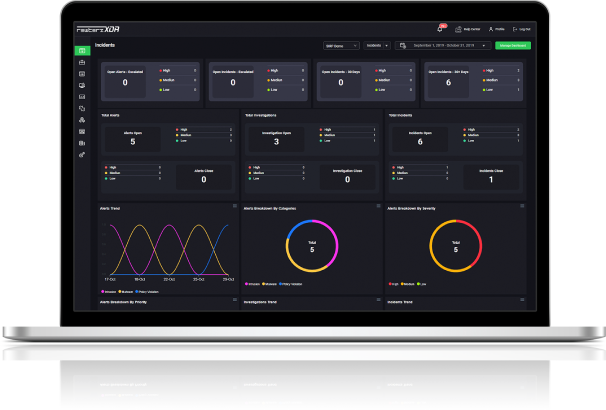

GitLab Patches DoS and SSRF Flaws
September 10, 2025
GitLab Patches DoS and SSRF Flaws
September 10, 2025In this article, we will explore how organizations can effectively integrate compliance with the Personal Data Protection Law (PDPL) into their data governance strategy. We will begin by examining the fundamentals of PDPL, including its origins and objectives, to provide a clear understanding of its purpose. Next, we will discuss why PDPL compliance is essential, highlighting the potential risks and consequences of failing to meet regulatory requirements. The article will then provide practical steps for embedding PDPL compliance into an organization's data governance framework, ensuring that personal data handling aligns with legal mandates. Finally, we will explore strategies for maintaining continuous compliance and mitigating risks associated with personal data management.
Understanding PDPL: A Brief Overview
The Personal Data Protection Law (PDPL) is a legal framework designed to regulate the collection, processing, storage, and transfer of personal data. Originally introduced in Saudi Arabia, PDPL aligns with global data protection standards such as the EU’s General Data Protection Regulation (GDPR) while incorporating region-specific requirements.
The PDPL was enacted to safeguard individuals' rights over their personal data and impose obligations on organizations that collect and process such information. The law mandates stringent measures for data security, consent management, cross-border data transfers, and incident reporting, ensuring greater transparency and accountability in handling personal data.
The Importance of PDPL Compliance
Legal and Regulatory Adherence
Non-compliance with PDPL can result in severe penalties, including hefty fines and legal actions. Regulatory bodies strictly enforce compliance, and failure to adhere to the law can lead to investigations, reputational damage, and even business disruptions.
Consumer Trust and Business Reputation
Organizations that demonstrate compliance with PDPL earn the trust of customers and stakeholders. With growing concerns over data privacy, businesses that prioritize data protection strengthen their brand reputation and competitive edge.
Avoiding Financial and Operational Risks
Failure to comply with PDPL can lead to severe consequences to a business, which will be explored in the next section. Implementing a robust data governance framework mitigates these risks and ensures business continuity.
The Consequences of Non-Compliance
Failure to comply with PDPL can result in severe legal penalties, including fines imposed by regulatory authorities, suspension of data processing activities, and, in extreme cases, criminal liability for responsible individuals or entities. These legal consequences can have lasting financial and operational repercussions. Additionally, organizations that experience data breaches or fail to meet PDPL requirements may suffer significant reputational damage. A loss of customer trust, negative media coverage, and reduced business credibility can all stem from non-compliance, making it difficult to attract and retain clients.
Beyond legal and reputational risks, operational disruptions are another major consequence of non-compliance. Regulatory restrictions on data processing may force businesses to halt critical operations, delaying projects, affecting service delivery, and ultimately impacting revenue. Furthermore, litigation risks pose a serious threat to non-compliant organizations. Individuals whose personal data has been mishandled may file lawsuits, leading to costly legal battles, compensation claims, and additional regulatory scrutiny. These combined risks highlight the importance of integrating PDPL compliance into an organization's data governance strategy to ensure legal, operational, and reputational security.
Embedding PDPL Compliance into Your Data Governance Strategy
To establish a robust data governance framework, organizations must integrate PDPL compliance into their broader strategy. This begins with defining data ownership and accountability, ensuring that specific roles and responsibilities are assigned to data stewards who oversee compliance measures. Developing clear data policies is also crucial; these policies should outline how personal data is collected, processed, stored, and shared in accordance with PDPL requirements.
Conducting thorough data mapping is another essential step, as it allows organizations to identify all data flows within their systems, providing insight into where and how personal data is handled.
Implementing data privacy policies and procedures is fundamental to PDPL compliance. Consent management processes must be in place to ensure that explicit user consent is obtained before collecting personal data. Organizations should also establish data retention and disposal policies, specifying how long personal data can be retained and ensuring its secure disposal when no longer needed. Third-party risk management is equally important, requiring organizations to verify that vendors and partners handling personal data adhere to PDPL regulations and maintain the same level of security and compliance.
Strengthening data security controls is essential in safeguarding personal data against unauthorized access and breaches. Implementing data encryption mechanisms ensures that both stored and transmitted data remain protected from potential cyber threats. Access control measures should be enforced to restrict data access only to authorized personnel, minimizing the risk of unauthorized exposure. Additionally, organizations must develop a comprehensive incident response plan to address potential data breaches, ensuring timely reporting and mitigation of risks as required by PDPL.
Conducting regular compliance audits helps organizations maintain PDPL compliance over time. Internal audits should be carried out periodically to review data governance policies and practices, identifying areas that require improvement. Third-party assessments conducted by independent auditors provide an objective evaluation of compliance status and help uncover potential vulnerabilities. Continuous monitoring using automated tools allows organizations to track data access, usage, and compliance metrics in real-time, ensuring ongoing adherence to regulatory requirements.
Training employees and fostering a privacy-focused culture is another critical component of PDPL compliance. Employee awareness programs should be conducted regularly to educate staff on PDPL requirements and best practices. Role-based training ensures that employees handling sensitive data, including security teams, receive specialized training tailored to their responsibilities. Establishing whistleblower mechanisms provides a confidential channel for employees to report potential data privacy violations, helping organizations address compliance concerns proactively.
Ensuring compliance with cross-border data transfer regulations is essential for organizations that operate internationally. Legal agreements such as standard contractual clauses (SCCs) or regulatory approvals should be in place to facilitate secure data transfers across jurisdictions. Data localization measures must be adhered to when required, ensuring that personal data is stored within specified geographic boundaries. Conducting impact assessments enables organizations to evaluate potential risks associated with cross-border data movement, allowing them to implement necessary safeguards.
Integrating PDPL compliance into your organization’s data governance strategy is essential for legal compliance, risk mitigation, and maintaining customer trust. By implementing a structured approach to data governance, organizations can ensure that personal data is managed responsibly and in alignment with regulatory requirements.
Rewterz Cyber Security specializes in helping businesses navigate PDPL compliance seamlessly. Our experts provide tailored solutions to ensure robust data governance, regulatory adherence, and continuous risk mitigation.
Contact Rewterz today to strengthen your data governance strategy and achieve PDPL compliance with confidence!








